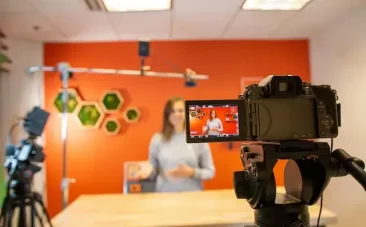Table of Content

Facebook Ads – What Is The Optimal Frequency?
You guessed it: there is no single answer to the optimal frequency with which your Facebook Ads should appear to the target audience. It is determined by the campaign goal as well as the other marketing efforts. We offer some suggestions in this article on how you can work on optimising your ad frequency based on your goals.
What does the frequency of Facebook Ads mean?
The frequency of your ad on Facebook is the average number of times it has been seen. The number of ad impressions divided by the ad’s reach is the formula for calculating Facebook ad frequency.
What are impressions?
The total number of times your ads have been shown on Facebook platforms.
What is reach?
The number of people who have seen at least one of your advertisements. A person in your campaign’s audience may see your ads on Facebook platforms multiple times. The frequency will be greater than one in this case.
The Optimal Facebook Frequency
As stated in the introduction, the optimal ad frequency is heavily influenced by the campaign goal and other marketing efforts across channels (the marketing mix).
Campaigns with the goal of increasing awareness (Top Funnel) require a different frequency than campaigns with the goal of conversions such as leads.
Frequency can be used to manage your campaign and raise awareness and recognition. If you want to raise awareness, recognition, and action, it may be advantageous to maintain a high frequency, so that the same ad is shown to the same person in your target group several times.
If, on the other hand, you want to maximise attention and awareness, it may be advantageous to control and manage the campaign’s delivery by maintaining a low frequency and thus increasing the campaign’s reach.
Several factors influence (and can be controlled) the frequency of Facebook Ads, including the campaign budget and the size of the ad group’s audience.
How are ad impressions and reach calculated?
It is important to note that not all ad exposures are the same and, as a result, are not of the same quality. When evaluating ad impression, the following factors should be taken into account.
- Individuals in the target group’s scroll speed.
- The ad’s format and composition.
- The platform and location where the ad appears.
When evaluating the frequency of your campaign, it is critical to consider:
- Size of the target group.
- Budget for the campaign.
- The advertisement’s content.
- The total amount of time a person in the target audience spends looking at the ad’s content.
Thus, Facebook’s advertising frequency is determined by a number of variables and combinations that you should be aware of when determining whether your Facebook campaign’s advertising frequency is on the high or low end – or completely appropriate.
How To Evaluate The Frequency On Facebook
Consider your Facebook ad appearing to someone who is quickly scrolling through their Instagram feed. Your ad will appear in the fraction of a second when users pause to scroll further.
Instagram counts ad impressions from the moment an ad appears on the screen (larger than 0 pixels and for more than 0 seconds) – thus the displayed ad counts as a display even if the person in the target group does not see or perceive the ad.
The next day, the same user is scrolling through Facebook stories and watching three seconds of the same advertisement. The frequency is now 2 rather than 1.
Facebook’s Ad Frequency Is An Average Evaluation
With an average frequency of three, some users may have only seen the ad once, while others may have seen it ten times or more. However, the average number of ad impressions per person in the target audience will be around three.
The manual “Maximum Reach Cap” option is not available for conversion-based campaigns. This is primarily because the algorithm requires ‘freedom’ in order to adapt and calculate the optimal frequency for the person in the campaign’s target group. Although it is not possible to control the frequency directly, the aforementioned factors – audience size, budget, ad type and content – can be used to indirectly control the level of your campaign’s ad frequency.
Controlling the frequency of Facebook Ads is a critical skill. You don’t want your ads to be overexposed to the same person, but you do want to achieve a sufficient number of ad exposures with the target group to influence them to action.
How To Control And Optimise Your Ad Frequency
- When targeting smaller segments, using dynamic ads and/or manually controlling the frequency limit on awareness-based campaigns can be beneficial. Especially if the advertisements are static.
- Keep an eye on the performance variables “Quality Ranking,” “Engagement Rate Ranking,” and “Conversion Ranking” at the ad level, which are evaluated on a scale of below, above, and above average.
- Use automated rules to monitor your frequency and create rules for the maximum frequency limit you want. If the frequency exceeds your set limit, you can create a rule that sends you a notification and allows you to take action.
- Keep an eye on the campaign’s overall results. If your results begin to deteriorate, it could be due to an excessive ad frequency (your target audience gets tired of seeing the same ad multiple times).
So What Is The Optimal Ad Frequency?
There is no optimal average or fixed frequency.
The optimal frequency is determined by the goal of your campaign and the desired outcome. Adjust your frequency so that your campaign yields the most results at the lowest cost.




![happy-young-asia-businessmen-businesswoman-meeting-brainstorming-some-new-ideas-about-project-scaled (1) Top 10 Digital Marketing Agencies In Thailand [2024]](https://www.ibex.co.th/wp-content/uploads/elementor/thumbs/happy-young-asia-businessmen-businesswoman-meeting-brainstorming-some-new-ideas-about-project-scaled-1-qji23hztd22xdvln8gjfucufhgiekie3sh7loq8di6.webp)





